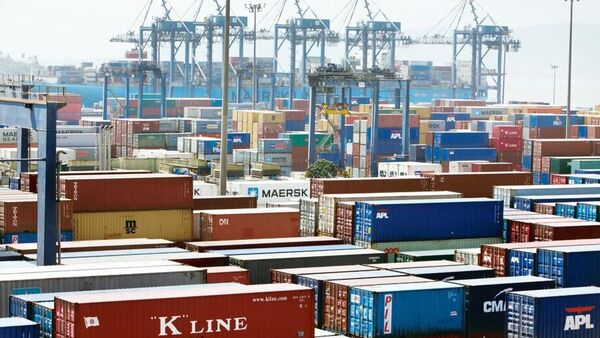The much awaited Foreign Trade Policy (FTP) 2023 is innovative and different from its predecessors. While earlier FTPs launched new schemes and incentives, this FTP is a deviation. It tries to move away from an incentive-based regime towards creating an enabling ecosystem for Indian exporters. This is because a number of our export-linked subsidies—some offered under the previous FTP (for 2015-20)—were challenged by the US as prohibited subsidies under the World Trade Organization’s (WTO) Agreement on Subsidies and Countervailing Measures. India lost the case at the WTO in 2019 and had to withdraw these subsidies or replace them with WTO-compliant supports like the Remission of Duties and Taxes on Export Products (Rodtep) Scheme, which replaced the previous Merchandise Exports from India Scheme (MEIS). In the new FTP, there has been a shift from announcing new subsidies to focusing on the ease of doing business and facilitating the integration of Indian small and medium enterprises (SMEs) with global value chains.
India’s growing e-commerce sector received substantial attention in FTP 2023. It offers a range of trade facilitation measures focused on boosting the growth of e-commerce exports, estimated to reach $200-300 billion by 2030. Enhancing e-commerce can help India attain its export targets of $1 trillion for goods and services each by 2030. The extension of all FTP benefits to e-commerce exports along with outreach and training activities for small e-commerce exporters are steps in the right direction. The policy proposes to increase the value limit for exports from ₹5 lakh to ₹10 lakh per consignment. However, to reach the e-commerce export target of $200-300 billion, there should not be any value limit, as has been the practice in most of our competing countries. The value limit on exports is a deterrent for exporters to use the e-commerce mode for exports of high-value consignments in sectors like gems and jewellery, handicrafts, handmade carpets and electronics. Given that FTP 2023 declared four new towns of export excellence (TEE) namely Faridabad (apparels), Moradabad (handicrafts), Mirzapur (handmade carpets and dari) and Varanasi (handloom and handicrafts), all of which may have exporters using the e-commerce channel to export high-value consignments and samples, the value limit on such exports needs a thorough review. It is now time to unshackle our exporters and allow them the freedom to select their best mode of export—general cargo or express/courier.
Technology plays a vital role in trade facilitation. While FTP 2023 briefly mentions the interlinking of infotech systems across government departments for e-commerce exports, it did not specify the need to link the IT system of customs with that of partner government agencies like the Drug Controller General of India or Food Safety and Standards Authority of India for import clearances of express/courier consignments. This is a necessity not only to facilitate the fast-track mobility of consignments, but also for a robust risk management system for end-to-end clearances. India does not have robust data on e-commerce trade, or on trade through the express and courier mode. A technology-driven system that interconnects different government departments will automatically generate data. This data can then be used in domestic policymaking and for negotiating trade agreements on digital trade, e-commerce and express delivery.
FTP 2023 proposes to develop district-level exports by identifying products and services with export potential in districts, addressing bottlenecks, supporting local exporters/manufacturers to scale up and helping them with marketing, including with finding potential buyers. To formalize this process through an institutional mechanism, it has proposed to create District Export Promotion Committees and a District Export Action Plan, where 2-3 high-potential products/services would be identified from each district for export. To do so, at the onset, it is important to have data/information on what kinds of goods and services are being produced in the districts and which of these have export potential. While a lot of work has been done to map food and other products from different districts, mapping services that can be exported from each district is a significant challenge in the absence of robust services sector data. There is a need for an institutional mechanism to collect such data.
Other welcome moves under FTP 2023 include streamlining of policy on the export of dual-use items under the Special Chemicals, Organism, Materials, Equipment and Technologies list and the easing of guidelines for promoting high-technology exports.
It also introduced a one-time amnesty scheme for exporters to close old pending authorizations and start afresh. To reduce transaction and handling costs, a single-window system to facilitate the export of perishable agricultural produce has been proposed, to be facilitated through the Agricultural and Processed Food Products Export Development Authority.
The latest FTP has tried to align itself with India’s focus on logistics and trade facilitation and its objective of export promotion. However, it has remained silent on issues like inverted duties, which is adding to costs for some of our exports, thereby reducing their global competitiveness. The future of Special Economic Zones (SEZs) also remains in the dark.
While every policy has its positives and negatives, FTP 2023 is an especially dynamic policy, with a long-term vision of finding innovative ways to boost trade.
These are the author’s personal views.
Arpita Mukherjee is a professor at the Indian Council for Research on International Economic Relations (ICRIER)
Download The Mint News App to get Daily Market Updates.
More
Less
#foreign #trade #policy #bets #ecommerce #export #jump
